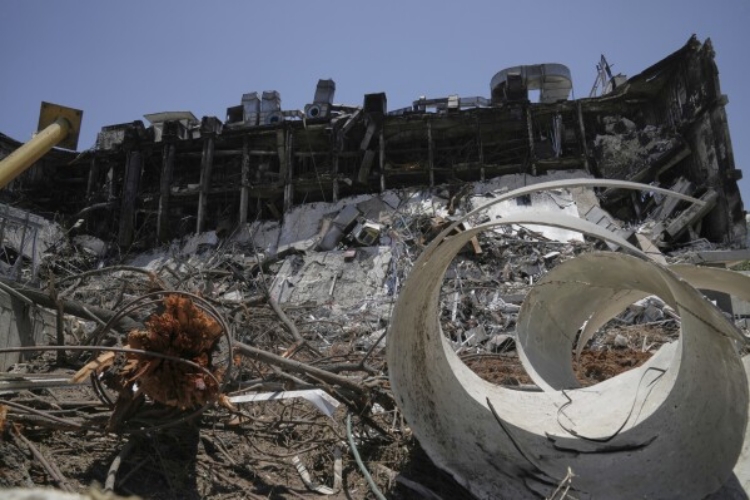Gambiaj.com – (REHOVOT, Israel) – A direct Iranian missile strike on the Weizmann Institute of Science, one of Israel’s premier research institutions, has caused massive destruction to key scientific laboratories, marking a grim new chapter in the intensifying hostilities between Iran and Israel.
The early morning attack on Saturday, which left no casualties, severely damaged two buildings on the Weizmann campus in Rehovot and partially destroyed dozens more.
The missile strike, part of a broader and escalating conflict between the two nations, has disrupted ongoing research in fields such as molecular neuroscience, developmental biology, and cancer studies — work that many scientists say took decades to build.
“It’s a moral victory” for Iran, said Professor Oren Schuldiner, whose lab was obliterated in the strike. “They managed to harm the crown jewel of science in Israel.”
Founded in 1934 and globally renowned for its research output, the Weizmann Institute has long symbolized Israel’s scientific prowess. The attack has not only upended scientific work but also sent a chilling signal to Israeli academics that they are no longer immune to direct retaliation.
Science in the Crosshairs and Widespread Destruction
The missile strike appears to be part of a tit-for-tat dynamic that has escalated beyond traditional military targets. In recent weeks, Israel has launched deadly operations that killed multiple Iranian nuclear scientists and senior military commanders.
For years, Israel has carried out covert operations against Iranian scientists to stymie Tehran’s nuclear ambitions.
Iran’s apparent response — striking a hub of Israeli civilian science — has added a new dimension to the conflict.
“The Weizmann Institute has been in Iran’s sights,” said Yoel Guzansky, a senior researcher at the Institute for National Security Studies in Tel Aviv. While the exact intentions behind the strike remain unconfirmed, Guzansky believes the choice of target was deliberate: “You harm our scientists, so we are also harming (your) scientific cadre.”
Israeli intelligence had previously foiled at least one Iranian-linked plot to assassinate a nuclear scientist at Weizmann, according to authorities. That attempt, involving alleged Palestinian operatives from East Jerusalem, was disrupted before any action could be taken.
The institute reported that two buildings were directly hit: one used for life sciences research and another still under construction, intended for chemistry labs.
Numerous other structures sustained collateral damage. Shattered glass, twisted beams, and piles of rubble now litter the once pristine campus.
“Several buildings were hit quite hard, meaning that some labs were literally decimated, really leaving nothing,” said Professor Sarel Fleishman. Research into regenerative medicine, developmental biology, and neuroscience has been brought to a halt.
Professor Schuldiner, who had run his lab for 16 years, said nothing could be salvaged. His lab had contained genetically modified fruit flies used to study neurological disorders like autism and schizophrenia. “All of our studies have stopped,” he said. “It’s very significant damage to the science that we can create and to the contribution we can make to the world.”
More Than Military Retaliation
While Weizmann is a multidisciplinary institution with collaborations across the sciences, including with defense companies like Elbit Systems, its targeting points to a broader strategy by Iran — aiming not just at Israel’s military might but at its intellectual infrastructure.
For Iran, the attack may be seen as a symbolic victory in an asymmetrical war long fought in the shadows. For Israel, it raises pressing questions about how to protect its civilian brainpower and the global reputation of its scientific institutions.
As investigators assess the full scope of the damage, the scientific community reels from the blow, knowing that years of work — and the promise of future discoveries — may be lost.
“The rebuilding will take years,” said Schuldiner. “But even then, some things may never be replaced.”










